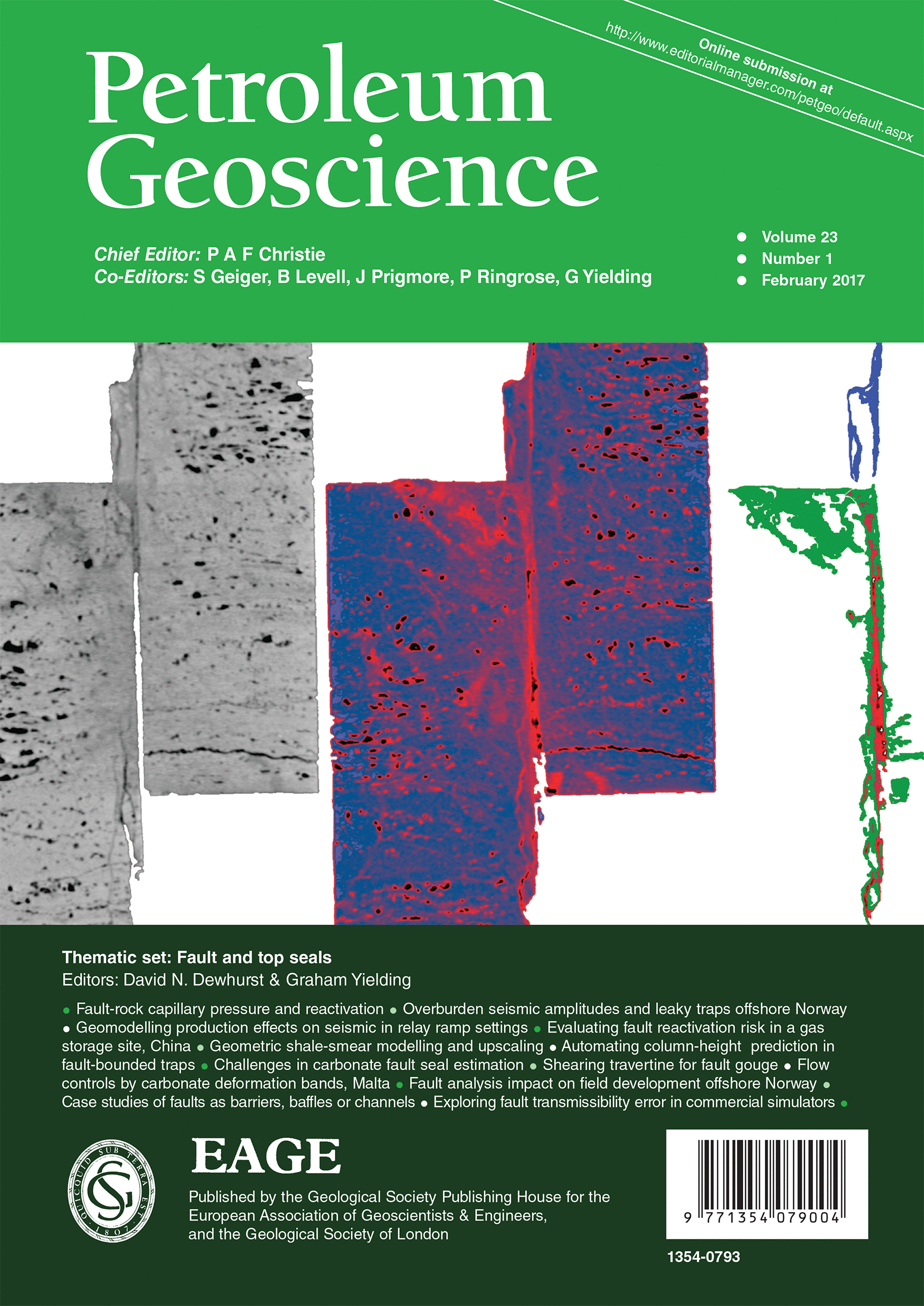
Full text loading...
In contrast to faults in clastic reservoirs, rules to predict the exploration and production timescale fault-seal potential in carbonates are lacking. This paper provides a summary of carbonate reservoirs with cross-fault column height differences that represent examples of apparent static fault seal, and a summary of observed examples of dynamic fault seal in carbonate reservoirs and aquifers. These include cross-fault differences in water table depths across carbonate–carbonate juxtapositions, cross-fault pressure differences in carbonate aquifers separated by faults, production-induced cross-fault pressure differences in carbonate hydrocarbon reservoirs, sealing behaviour of faults in carbonate reservoirs inferred from well tests, and examples of low fault transmissibilities from history-matching exercises from carbonate reservoirs. This paper also documents the range of compositions of fault rocks in carbonates and the range of permeabilities that have been reported from low-permeability fault cores in carbonate fault zones, as well as the implications of the observed range of fault permeabilities in carbonates for sealing behaviours. The purpose of this paper is not to argue that every fault in a carbonate reservoir will seal or will even be capable of sealing. There are, however, enough examples of faults in carbonates that are sealing in a dynamic sense, and in a static sense, that the topic of carbonate fault seal should warrant much more study. Creation of predictive models will ultimately require a considerable amount of subsurface data, but these models should be created.

Article metrics loading...

Full text loading...
References


Data & Media loading...

